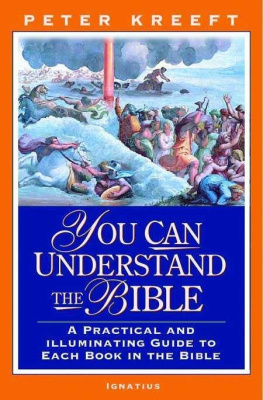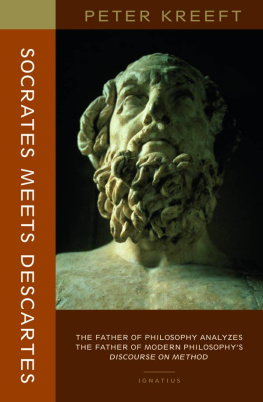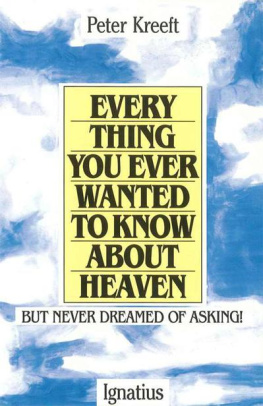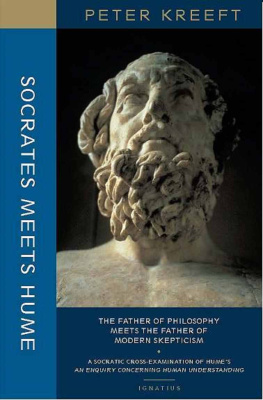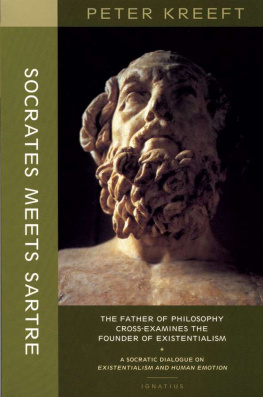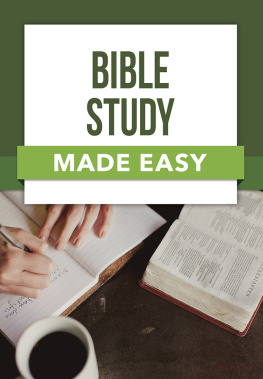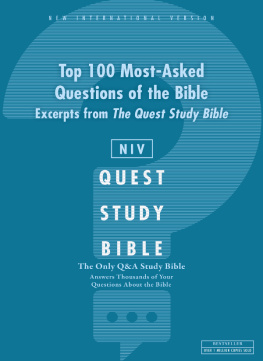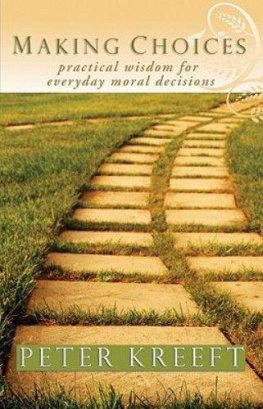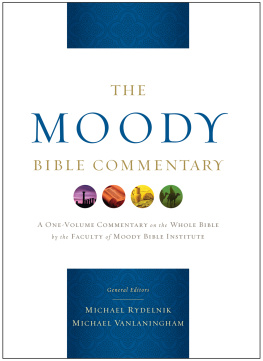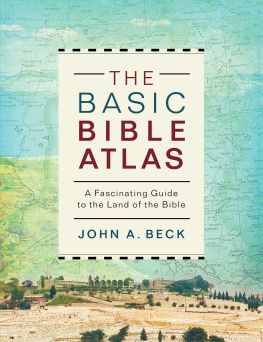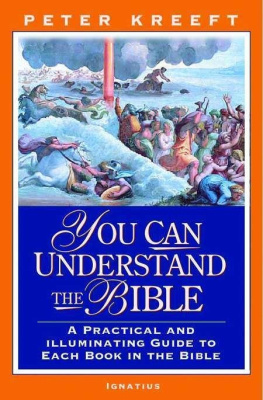YOU CAN UNDERSTAND THE BIBLE
PETER KREEFT
YOU CAN UNDERSTAND THE BIBLE
A Practical Guide to Each
Book in the Bible
IGNATIUS PRESS SAN FRANCISCO
The chapters in this book first appeared in article form in issues of
The National Catholic Register during 1989, 1990, and 1991
Original book editions:
You Can Understand the Old Testament: A Book-by-Book Guide for Catholics
1990 by Twin Circle Publishing CompanyPublished by Servant Publications, Ann Arbor, Michigan
and
Reading and Praying the New Testament: A Book-by-Book Guide for Catholics
1992 by Twin Circle Publishing Company
Published by Servant Publications, Ann Arbor, Michigan
New, combined and revised edition printed by permission of Peter Kreeft
Cover art: Raphael (1483-1520)
The Crossing of the Red Sea
From The Story of Moses. Fresco.
Location: Logge, Vatican Palace, Vatican State
Photo Credit: Scala / Art Resource, NY
Cover design by Riz Boncan Marsella
2005 by Ignatius Press, San FranciscoAll rights reserved
ISBN 1-58617-045-7Library of Congress Control Number 2004107666
Printed in the United States of America
CONTENTS
Part One: The Old Testament
Part Two: The New Testament
AUTHORS NOTE
I am not a biblical scholar, and this is not an authoritative and exhaustive introduction to the Bible. It is a popular overview, intended to pique the readers interest in reading and studying Gods Word. It is a book for amateurs. It tells the reader not the things only scholars care about, like arguments about dates and authorship, but what everyone (except fools) cares about: life-changing wisdom. The first comes from mans mind, the second from Gods.
Unless otherwise indicated, I quote from the Revised Standard Version (RSV) of the Bible. I have chosen this particular version of Scripture because it is both literal and literary, both accurate and beautiful.
GENERAL INTRODUCTION TO THE BIBLE
There are thousands of books about The Book. Why another one?
This Book itself says, Of making of many books there is no end, and much study is a weariness of the flesh (Eccles 12:12). (This is the favorite Bible verse of lazy students.) How is this book different?
First, it is for beginners. It is needed because biblical literacy is declining in Western civilization, as is literacy in general.
Second, it is especially (but not exclusively) for Catholics. Ironically, biblical literacy has declined among Catholics too since Vatican II, even though that Council strongly called for a renewal of it. A book like this on Bible basics would have been superfluous fifty years ago.
Third, it is short and simple. Each chapter can be read over a cup of coffee and a doughnut. It is not full of the latest theories in professional biblical scholarship. I am not a professional Bible scholar, but a teacher and an amateur. ( Amateur means lover.)
It is also designed to be practical. It is not a short-cut to reading the Bible itself. It is like a lab manual rather than a textbook. (So is the Bible itself: its Author intends reading and thinking to be preliminary to doing: see Mt 7:24-29.)
***
Reading the Bible should be a form of prayer. The Bible should be read in Gods presence and as the unfolding of His mind. It is not just a book, but Gods love letter to you. It is Gods revelation, Gods mind, operating through your mind and your reading, so your reading is your response to His mind and will. Reading it is aligning your mind and will with Gods; therefore it is a fulfillment of the prayer Thy will be done, which is the most basic and essential key to achieving our whole purpose on earth: holiness and happiness. I challenge each reader to give a good excuse (to God, not to me, or even just to yourself) for not putting aside fifteen minutes a day to use this fundamental aid to fulfilling the meaning of your life.
Both prayer and Bible reading are ways of listening to God. They should blend: our prayer should be biblical and our Bible reading prayerful.
In Catholic theology, the Bible is sacramental: it is a sign that is an occasion for grace. The Bible fits the two classic definitions of a sacrament: (1) a visible sign instituted by Christ to give grace and (2) a sign that effects what it signifies. However, unlike the seven sacraments, it does not work ex opere operato; it does not give grace by itself, but is dependent on our use of it.
How do you get grace? The same way you get wet. You dont make the rain, and you dont make Gods grace. But to get grace you have to go outside yourself, you have to go where God is, just as you have to go outside to get rained on. If you stand in the street, youll get hit by a car. If you stand in the Bible, youll get hit by Gods kiss. The Bible is a big sprig of His mistletoe.
Though it is not a sacrament, it has power. Its power comes from two wills, Gods and ours. It is the Spirits sword (Eph 6:17) that cuts our very being apart (Heb 4:12), though we must give it an opening by exposing our minds and hearts and wills to its cutting edge. When we do that, Gods Kingdom comes to earth. For it first comes to that tiny but crucially important bit of earth that is your mind and will. Then it transforms your life, which your mind and will control. Then, through your life, your world.
What strange kind of a book is this, anyway?
The word Bible means book (singular). But the Bible is in fact seventy-two different books (sixty-six in the Protestant canon) from many different authors and times and in many different literary styles and forms: history, poetry, prophecy, drama, philosophy, letters, visions, practical advice, songs, laws, and much more. This is not a book, this is a world.
Yet there is a unity in this diversity. Most essentially the Bible is a story. Unlike the holy books of other religions, the Bibles basic line is a story line. It narrates real events that really happened to real people in real history. G. K. Chesterton said, There are only two things that never get boring: stories and persons. The persons involved here include the three most important Persons of all: the Father, the Son, and the Holy Spirit. The Bible is stories of God. But it is also stories about us, about our relationships with God and each other. (The word religion, from the Latin religare, means essentially binding relationship.) The horizontal (man-to-man) and vertical (man-to-God) relationships meet here and form a cross.
But there are many kinds of stories: war stories, love stories, detective stories, and many more. What kind of story is this? It tells us what kind of story we are in; that is how it tells us the meaning of our lives.
It is a love story, because it is history, and history is His story, and He is love. Love is Gods plan and purpose in all that He does.
The story unfolds in three acts, which theologians call creation, fall, and redemption. Every story ever told fits this pattern, because this is the basic pattern of all human history. We could call the three stages setup, upset, and reset. First a situation is set up; then it is somehow upset by a problem or conflict or challenge; and then it is reset, when the challenge is confronted, either successfully or unsuccessfully. Paradise, Paradise Lost, and Paradise Regained are the three acts of the cosmic human drama, and we are now in the third act, which began as early as the third chapter of Genesis, when God began to redeem, or buy back, fallen mankind.
This third act, in turn, has three scenes. First, God reveals Himself as Father, in the Old Testament; then, as Jesus the Son in the Gospels; finally, He sends the Holy Spirit to be the soul of His Church for the rest of time.
***
The books of both Old and New Testaments are divided into three main categories: history, wisdom, and prophecy. Thus the Bible encompasses past, present, and future. But its history books are more than records of the past; they tell us truths that are just as true and operative for the present. And its wisdom books tell timeless truths that are not just for the present time but for all times. Finally, its prophets do not merely foretell the future, but forth-tell Gods truth for all times. The whole Bible is Gods permanent prophet continually telling forth the truths we need to know to guide our road on earth to a happy eternity.
Next page
